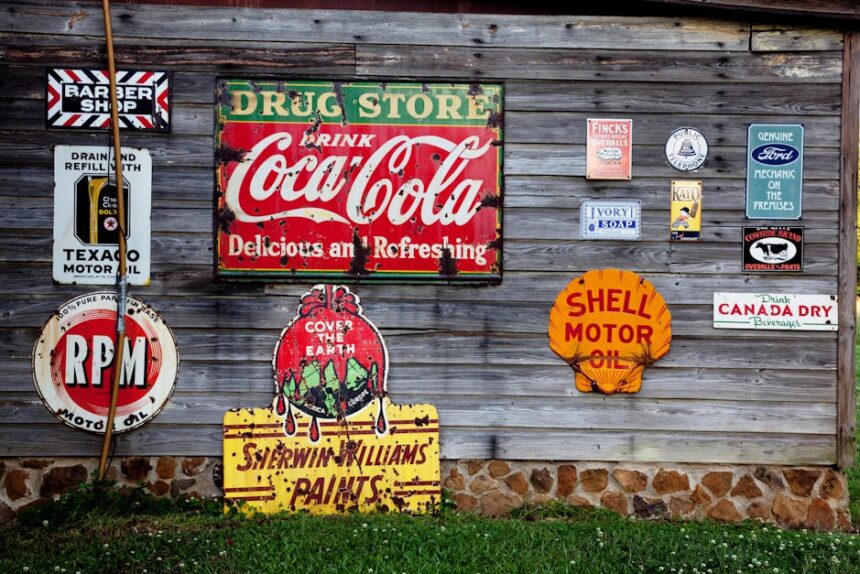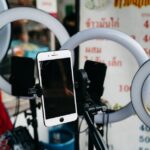Improving Your Facebook Ad Landing Page Conversion Rates
Understanding the pivotal role of your Facebook ad landing page is the first step towards unlocking significantly higher conversion rates and maximizing your return on ad spend. A landing page isn’t merely a destination; it’s the critical juncture where interest cultivated by your ad transforms into tangible action, whether that’s a purchase, a lead, a signup, or a download. Unlike a homepage, which serves as a general portal to your entire site, a dedicated landing page is meticulously designed with a singular focus: converting visitors who arrive from a specific ad campaign. This singular focus allows for a streamlined, distraction-free experience that guides the user directly towards the desired outcome. The user journey from a Facebook ad involves an initial impression, a click driven by compelling ad copy and visuals, and then the landing page experience. If the landing page fails to deliver on the ad’s promise, provide clear value, or facilitate an easy conversion path, the entire ad budget becomes inefficient, leading to high bounce rates and low conversion rates, regardless of how well the ad itself performed. Optimizing this crucial touchpoint can dramatically amplify your campaign’s effectiveness.
Before a user even reaches your landing page, the groundwork for conversion is laid within your Facebook ad itself. Pre-landing page optimization is about ensuring seamless message match and visual consistency, which are foundational to building trust and reducing friction. The ad copy must align perfectly with the headline and content on your landing page. If your ad promises a “50% off summer sale,” your landing page must immediately greet the user with a prominent display of that exact offer. Any discrepancy creates cognitive dissonance, leading to confusion and an immediate departure. Similarly, visual consistency is paramount. The imagery, color palette, and overall aesthetic of your Facebook ad should seamlessly transition to your landing page. This creates a cohesive brand experience, reinforcing the user’s belief that they have arrived at the correct destination and that your brand is professional and trustworthy. Imagine clicking on a vibrant, modern ad only to land on a dated, clunky page; this jarring experience instantly erodes confidence.
Targeting accuracy also plays a crucial, albeit indirect, role in landing page conversion rates. If your Facebook ad targets an audience that isn’t genuinely interested in your offer, even the most perfectly optimized landing page will struggle to convert. Precise audience segmentation ensures that the users clicking on your ad are pre-qualified and more receptive to your message, making the landing page’s job significantly easier. Finally, the Call-to-Action (CTA) within your ad must be crystal clear and congruent with the CTA on your landing page. If the ad says “Learn More,” the landing page should deliver information; if it says “Shop Now,” it should present products ready for purchase. A misaligned CTA can confuse users about what action is expected of them once they land on your page. By meticulously optimizing these pre-click elements, you effectively warm up your audience, setting them up for a positive and conversion-focused experience once they arrive at your landing page.
Once a user lands on your page, a series of core elements come into play, each designed to collectively persuade and facilitate the desired action. The headline is the absolute first thing a visitor sees, and its importance cannot be overstated. It must be clear, compelling, and immediately communicate the core benefit or value proposition. Crucially, it should mirror the primary message or offer from your Facebook ad to ensure message match and reduce cognitive load. A strong headline answers the question, “What’s in it for me?” and ideally includes keywords that resonate with your target audience’s pain points or desires. Below the headline, the hero section, or the content “above the fold” (visible without scrolling), is your prime real estate. This area needs to contain:
- A compelling image or video: High-quality, relevant visuals instantly convey emotion, context, and value. For products, show the product in use; for services, illustrate the benefit or outcome. Video can be particularly effective for complex offers, explaining value quickly.
- The core value proposition: A succinct statement explaining what you offer and why it matters to the user. This is your unique selling proposition (USP).
- The primary Call to Action (CTA): This button must be prominent, clearly labeled, and instantly recognizable as the next step. Its placement above the fold ensures that users can convert immediately if they are ready, without needing to scroll.
Moving beyond the hero section, the body copy is where you elaborate on your offer, address objections, and build a case for conversion. Effective body copy is not merely a description of features but a compelling narrative focused on benefits. Users care less about what your product does and more about what it does for them. Structure your copy using a problem-solution framework, where you first acknowledge a pain point the user might have, then present your offering as the ideal solution. To enhance readability and engagement, employ:
- Scannability: Use clear headings (H2, H3), subheadings, bullet points, and numbered lists to break up large blocks of text. Most users scan pages before reading deeply.
- Short paragraphs: Keep paragraphs concise, typically 2-4 sentences, to avoid overwhelming the reader.
- Benefit-driven language: Continuously emphasize the advantages and positive outcomes your offer provides, rather than just listing features.
- Addressing objections: Anticipate potential hesitations a user might have (e.g., cost, complexity, trustworthiness) and proactively address them within the copy or in a dedicated FAQ section.
Social proof is a powerful psychological trigger that significantly boosts conversion rates. People are more likely to trust and convert if they see that others have already done so and had a positive experience. Integrate various forms of social proof effectively:
- Testimonials: Direct quotes from satisfied customers, ideally with names, photos, and even company affiliations. Video testimonials are even more impactful.
- Reviews and ratings: Display star ratings (e.g., 4.8/5 stars) and snippets of positive reviews. Integrating platforms like Trustpilot or Google Reviews can lend additional credibility.
- Trust badges/Logos: Showcase logos of reputable companies you’ve worked with, awards won, or certifications obtained.
- Numerical proof: Quantify your success with numbers, such as “10,000+ satisfied customers,” “saved users $1M last year,” or “featured in Forbes.”
- Case studies: For B2B or high-value offers, detailed case studies demonstrate real-world results and return on investment.
Forms are often the final hurdle to conversion for lead generation or purchase pages. Optimizing them for ease of use is critical:
- Optimal length: Request only the absolute minimum information required. Every extra field increases friction and decreases completion rates. For an initial lead, perhaps just name and email are sufficient.
- Clear labels: Ensure every field has a clear, concise label, ideally positioned above the input field.
- Intuitive field types: Use appropriate field types (e.g., calendar for dates, dropdowns for limited choices).
- Error handling: Provide immediate, clear, and helpful error messages if a user makes a mistake (e.g., “Please enter a valid email address”). Highlight the problematic field.
- Privacy policy link: Reassure users by linking to your privacy policy near the form, especially when collecting personal data.
- Pre-filled information: If possible, pre-fill any known information to reduce user effort.
The Call to Action (CTA) button is the gateway to conversion. Its effectiveness hinges on several factors:
- Clear, action-oriented language: Use verbs that clearly state the desired action and benefit, such as “Get My Free Quote,” “Download the Ebook Now,” “Shop the Sale,” or “Start Your 30-Day Trial.” Avoid generic “Submit” buttons.
- Prominence: The CTA must stand out visually. Use contrasting colors that align with your brand but make the button “pop.” Ensure it’s large enough to be easily clickable, especially on mobile.
- Strategic placement: Place the primary CTA above the fold and repeat it throughout the page as users scroll, particularly after presenting new compelling information.
- Urgency and scarcity: Where appropriate, create a sense of urgency (“Limited-Time Offer,” “Ends Tonight”) or scarcity (“Only 3 Spots Left”) to encourage immediate action.
Visual design plays a psychological role in trust and engagement.
- Branding consistency: Maintain consistent brand elements (logo, colors, fonts) from your ad to your landing page and across all your marketing materials.
- Clean layout and white space: Avoid clutter. Ample white space around elements makes the page feel less overwhelming and helps guide the eye to important information.
- Color psychology: Choose colors strategically. Blues often evoke trust, greens can signify growth or nature, reds can convey urgency or excitement.
- High-quality imagery and video: As mentioned, visuals are crucial. Ensure they are professional, relevant, and load quickly.
Finally, trust and credibility elements reassure visitors that they are engaging with a legitimate and secure business:
- SSL certificate: Displaying an SSL padlock icon and ensuring your site uses HTTPS is non-negotiable for security and SEO.
- Privacy policy and terms of service links: Clearly linked policies demonstrate transparency and legal compliance.
- Contact information: Providing a phone number, email address, or physical address (if applicable) makes your business seem more accessible and trustworthy.
- Refunds, guarantees, and return policies: Clearly stating these policies, especially for e-commerce, reduces perceived risk and builds buyer confidence.
Beyond the visible elements, the technical foundation of your landing page profoundly impacts its conversion potential. Page speed is a critical factor. In today’s fast-paced digital environment, users expect near-instantaneous loading times. Every second of delay can drastically increase bounce rates and negatively impact your conversion rate. Studies consistently show a direct correlation between page load time and conversions; even a one-second delay can lead to a significant drop in conversions. To optimize page speed:
- Image optimization: This is often the biggest culprit for slow pages. Compress images using tools like TinyPNG or ShortPixel, ensure they are correctly sized for their display area, and consider using modern formats like WebP. Implement lazy loading, which defers the loading of images outside the user’s viewport until they scroll down.
- Minify CSS and JavaScript: Remove unnecessary characters, comments, and white space from your code files to reduce their size.
- Utilize a Content Delivery Network (CDN): A CDN stores cached versions of your website’s content on servers around the world. When a user accesses your page, the content is delivered from the server closest to them, significantly reducing load times.
- Optimize server response time: Choose a reliable hosting provider and ensure your server infrastructure is robust enough to handle traffic spikes.
- Browser caching: Configure your server to tell browsers to store static elements of your page (like images and CSS files) locally, so they don’t have to download them again on subsequent visits.
Mobile responsiveness is no longer optional; it’s a fundamental requirement. The vast majority of Facebook ad clicks originate from mobile devices. If your landing page doesn’t adapt seamlessly to various screen sizes and orientations, providing an optimal experience on smartphones and tablets, you will alienate a significant portion of your audience. A mobile-friendly design means:
- Fluid layouts: Content and elements should resize and reflow gracefully across different screen sizes.
- Touch-friendly elements: Buttons and links should be large enough and have sufficient spacing to be easily tapped with a finger.
- Readability: Text should be legible without requiring zooming or excessive horizontal scrolling.
- Optimized navigation: If any navigation exists (though dedicated landing pages often minimize it), it should be simple and intuitive on mobile.
- Fast loading on mobile networks: Consider that mobile users might be on slower data connections.
Browser compatibility ensures your landing page functions correctly across different web browsers (Chrome, Firefox, Safari, Edge, etc.) and their versions. While less common with modern web standards, inconsistencies can still occur, leading to broken layouts or non-functional elements for some users. Regular testing across major browsers is advisable.
Finally, meticulous tracking and analytics setup is indispensable for understanding user behavior and identifying areas for improvement. Without proper tracking, all optimization efforts are based on guesswork.
- Facebook Pixel: Absolutely critical for anyone running Facebook ads. The Pixel tracks user actions on your landing page (page views, leads, purchases, custom events), allowing you to optimize ad delivery, build custom audiences for retargeting, and track campaign performance directly within Facebook Ads Manager. Ensure all relevant conversion events are properly configured.
- Google Analytics: Provides a more comprehensive view of user behavior, including traffic sources, bounce rates, time on page, conversion funnels, and demographics. Set up goals for your key conversion actions (e.g., form submissions, purchases) to track conversion rates.
- Heatmaps and session recordings (e.g., Hotjar, Crazy Egg): These tools provide invaluable visual insights into how users interact with your page. Heatmaps show where users click, move their mouse, and how far they scroll. Session recordings allow you to watch anonymized user sessions, revealing points of confusion, frustration, or unexpected behavior that traditional analytics might miss. This qualitative data is crucial for understanding why users aren’t converting.
Even with a perfectly designed and technically optimized landing page, the journey of conversion rate optimization (CRO) is ongoing. CRO methodologies are systematic approaches to improving the percentage of website visitors who complete a desired action.
A/B testing, also known as split testing, is the cornerstone of CRO. It involves creating two versions of a landing page (A and B) that are identical except for one single element. Half of your traffic is directed to version A, and the other half to version B. By comparing the conversion rates of both versions, you can scientifically determine which element performs better. Key elements to A/B test include:
- Headlines: Different value propositions, lengths, or emotional appeals.
- Call-to-Action (CTA) text: “Get Your Free Quote” vs. “Request a Demo.”
- CTA button color and size: Does a bolder color or larger size increase clicks?
- Images/Videos: Different hero shots, product angles, or video content.
- Form length and field types: Does reducing fields increase submissions?
- Page layout: Moving elements around, changing the order of sections.
- Body copy: Different messaging, emphasis on features vs. benefits, or tone.
- Social proof placement and type: Does a video testimonial above the fold convert better than text testimonials at the bottom?
- Pricing presentation: Different tiers, emphasis on savings, or payment options.
When conducting A/B tests, ensure you have sufficient traffic to reach statistical significance, meaning the observed difference between versions is unlikely to be due to random chance. Tools like Google Optimize or dedicated CRO platforms facilitate this. Remember that A/B testing is an iterative process. One test leads to insights that inform the next. Don’t stop at one winning variant; continue testing and refining.
User research provides qualitative insights that complement quantitative data from analytics. Understanding your users’ motivations, pain points, and behaviors is crucial for designing a truly effective landing page.
- Surveys: On-page surveys (e.g., using tools like Hotjar or Qualaroo) can ask visitors why they are not converting, what information they are looking for, or what questions they have. Post-purchase surveys can gather feedback on the conversion process.
- User interviews: One-on-one conversations with target audience members can uncover deep insights into their needs, mental models, and decision-making processes.
- Usability testing: Observe real users interacting with your landing page. Ask them to complete specific tasks and note where they struggle, get confused, or abandon the process. This reveals friction points that are often invisible to the page designer.
- Customer feedback analysis: Monitor customer service inquiries, social media comments, and review sites for recurring themes or complaints related to your product, service, or website experience.
Heuristic analysis involves an expert evaluation of your landing page against established usability and CRO principles (heuristics). This systematic review can quickly identify potential issues such as lack of clarity, poor design, or missing trust elements. While not based on data from your specific users, it leverages best practices from thousands of other successful optimizations.
Friction analysis is about systematically identifying and eliminating obstacles in the conversion path. Every step, every piece of required information, every moment of uncertainty adds friction. Examples of friction points include:
- Too many form fields.
- Unclear instructions.
- Slow loading times.
- Distracting elements (e.g., pop-ups, excessive navigation).
- Ambiguous error messages.
- Lack of trust signals.
By diligently analyzing user flows and data, you can pinpoint these friction points and prioritize their removal or mitigation.
Beyond the fundamental CRO techniques, several advanced strategies and considerations can further elevate your Facebook ad landing page conversion rates.
Personalization is a powerful technique that tailors the landing page content to individual users based on their specific context or data. For Facebook ads, this might involve:
- Dynamic content based on ad click: If a user clicks an ad specifically for “blue running shoes,” the landing page can dynamically display blue running shoes prominently, even if your main page features various colors. This reinforces message match.
- Geolocation-based personalization: Displaying local store information or specific offers based on the user’s IP address.
- Behavioral personalization: If you have data on a returning visitor (e.g., from a previous visit or interaction with your brand), you could dynamically show products they viewed, offer a discount on an item they abandoned in a cart, or greet them by name.
- Persona-based content: If your Facebook ads target different audience segments (e.g., small business owners vs. enterprise clients), the landing page can dynamically adjust its messaging, case studies, and CTAs to speak directly to that specific persona’s needs and pain points. Personalized experiences make users feel understood and increase relevance, leading to higher engagement and conversion.
Retargeting (or remarketing) isn’t directly about optimizing the landing page itself, but it’s a crucial strategy that leverages landing page data to boost overall conversion rates. Not everyone converts on their first visit. By installing the Facebook Pixel, you can create custom audiences of people who visited your landing page but didn’t convert (e.g., abandoned a form, added to cart but didn’t purchase). You can then serve them highly specific Facebook ads designed to bring them back and complete the action. These ads can offer:
- A special discount to overcome price objections.
- A reminder of the benefits they almost unlocked.
- Social proof they might have missed.
- Answers to common objections identified through user research.
The landing page for a retargeting ad might even be a slightly modified version of the original, directly addressing why they didn’t convert the first time.
Post-conversion optimization focuses on what happens immediately after a user converts. The thank you page or confirmation page isn’t just a dead end; it’s an opportunity to build customer loyalty, gather more information, or even generate additional revenue.
- Reinforce the value: Reiterate the benefits of their action and what to expect next.
- Set expectations: Clearly explain next steps (e.g., “Check your email for download link,” “Your order will ship in 2-3 days”).
- Upsell or cross-sell: Offer complementary products or services that would enhance their recent purchase.
- Downsell: If a high-value offer was declined, present a lower-priced alternative.
- Social sharing: Encourage users to share their purchase or signup on social media.
- Request feedback: Link to a survey to gather insights about their experience.
- Lead nurturing: Direct them to valuable content, a community, or resources that build a deeper relationship.
Legal compliance is increasingly important, particularly with data privacy regulations like GDPR (General Data Protection Regulation) in Europe and CCPA (California Consumer Privacy Act) in the United States. Your landing page must adhere to these regulations, especially if you collect personal data. This typically means:
- Clear consent mechanisms: Obtaining explicit consent for data collection and marketing communications (e.g., clearly worded checkboxes).
- Transparent privacy policy: Providing an easily accessible link to a comprehensive privacy policy explaining what data is collected, why, and how it’s used.
- Cookie consent banners: Informing users about cookie usage and providing options for managing preferences.
- Opt-out mechanisms: Ensuring users can easily unsubscribe from email lists or opt-out of data tracking.
Failing to comply can lead to significant fines and damage to your brand’s reputation.
Accessibility (WCAG guidelines) ensures your landing page is usable by people with disabilities. This is not only a matter of legal compliance in many regions but also an ethical imperative that expands your potential audience. Key accessibility considerations include:
- Alt text for images: Providing descriptive alternative text for images so screen readers can interpret them for visually impaired users.
- Keyboard navigation: Ensuring all interactive elements (forms, buttons) can be navigated and activated using only a keyboard.
- Color contrast: Using sufficient contrast between text and background colors for readability.
- Clear heading structure: Using semantic HTML headings (H1, H2, etc.) to provide a logical structure for screen readers.
- Form accessibility: Ensuring form fields have proper labels and error messages are clear and accessible.
- Transcripts or captions for videos: Providing alternatives for hearing-impaired users.
By making your landing page accessible, you create a more inclusive experience for all potential customers.
Despite the best intentions and meticulous planning, certain common pitfalls can undermine even the most promising Facebook ad landing pages. Recognizing and avoiding these mistakes is crucial for maximizing your conversion rates.
One of the most prevalent and damaging errors is a lack of message match. As previously discussed, if your ad promises X, but your landing page delivers Y, users will immediately feel confused, misled, or simply that they’ve clicked on the wrong link. This disconnect erodes trust and typically results in a very high bounce rate. The headline, sub-headline, and hero image on your landing page must directly reflect the core offer or message presented in the Facebook ad that led the user there. For instance, if your ad creative highlights “Free Shipping on All Orders,” the landing page’s main banner or headline should prominently reiterate “Enjoy Free Shipping on Your Order Today!” without requiring the user to search for that information.
Another significant pitfall is overwhelming design or information overload. While it’s important to provide enough information to convince a user, too much text, too many images, or too many choices can lead to analysis paralysis. A cluttered page is difficult to scan and comprehend quickly. Users arriving from Facebook ads are often seeking a quick resolution to a problem or a clear path to an offer. Minimize distractions:
- Remove unnecessary navigation menus that lead visitors away from the conversion goal.
- Avoid pop-ups that appear too soon or are difficult to close.
- Use white space effectively to create visual breathing room.
- Prioritize information, placing the most crucial details (value proposition, CTA) prominently.
Slow loading times remain a conversion killer. In an age of instant gratification, users have very little patience for pages that take more than a few seconds to load. A delay of even one or two seconds can double your bounce rate. This translates directly to wasted ad spend and lost conversion opportunities. Regularly test your page speed using tools like Google PageSpeed Insights and GTmetrix, and proactively address any identified bottlenecks related to image size, server response, or unoptimized code.
Having too many distractions on your landing page is a direct contradiction to its purpose. Unlike a general website, a landing page should be a focused funnel. This means:
- Eliminate main navigation bars: Users should not be encouraged to browse other parts of your site before converting.
- Minimize external links: Every link that leads off the page is a potential exit point from the conversion path. Only include essential links like privacy policy or terms of service, preferably in the footer.
- Limit choices: If you’re selling a specific product, don’t present an entire catalog. If you’re generating leads, don’t offer multiple unrelated downloads. Focus on the single desired action.
A poor mobile experience is a fatal flaw for Facebook ad campaigns. Given that the vast majority of Facebook’s users access the platform on mobile devices, it’s highly likely that a significant portion of your ad clicks will come from smartphones and tablets. If your landing page isn’t perfectly responsive – meaning elements are too small to tap, text is unreadable, or forms are difficult to fill out on a small screen – you will immediately lose these visitors. Prioritize mobile-first design and rigorous testing on various mobile devices.
Vague Calls to Action (CTAs) leave users uncertain about what will happen next. A generic “Submit” button is far less effective than a specific, benefit-oriented CTA like “Get My Free Ebook,” “Start Your 7-Day Trial,” or “Claim Your Discount Now.” The CTA should be clear, concise, and ideally, create a sense of anticipation or urgency. The button itself needs to stand out visually and be easily clickable.
The absence of social proof is a missed opportunity to build credibility and trust. In a world full of online scams and low-quality products, users are inherently skeptical. Seeing that others have had positive experiences with your brand significantly reduces perceived risk. Failing to include testimonials, reviews, trust badges, or quantifiable success metrics means you’re not leveraging one of the most powerful psychological triggers for conversion.
Finally, ignoring analytics is like flying blind. Without properly configured tracking (Facebook Pixel, Google Analytics, heatmaps), you have no way of knowing what’s working, what’s failing, or where users are dropping off. You can’t optimize what you don’t measure. Regularly analyze your data to identify patterns, pinpoint friction points, and inform your A/B testing strategy. Pay attention to metrics like bounce rate, time on page, conversion rate per device, and conversion funnel drop-offs. These insights are invaluable for iteratively improving your landing page performance. Consistently monitoring and reacting to your data ensures that your optimization efforts are data-driven and lead to measurable improvements in your Facebook ad conversion rates, transforming clicks into customers and maximizing your marketing investment.











